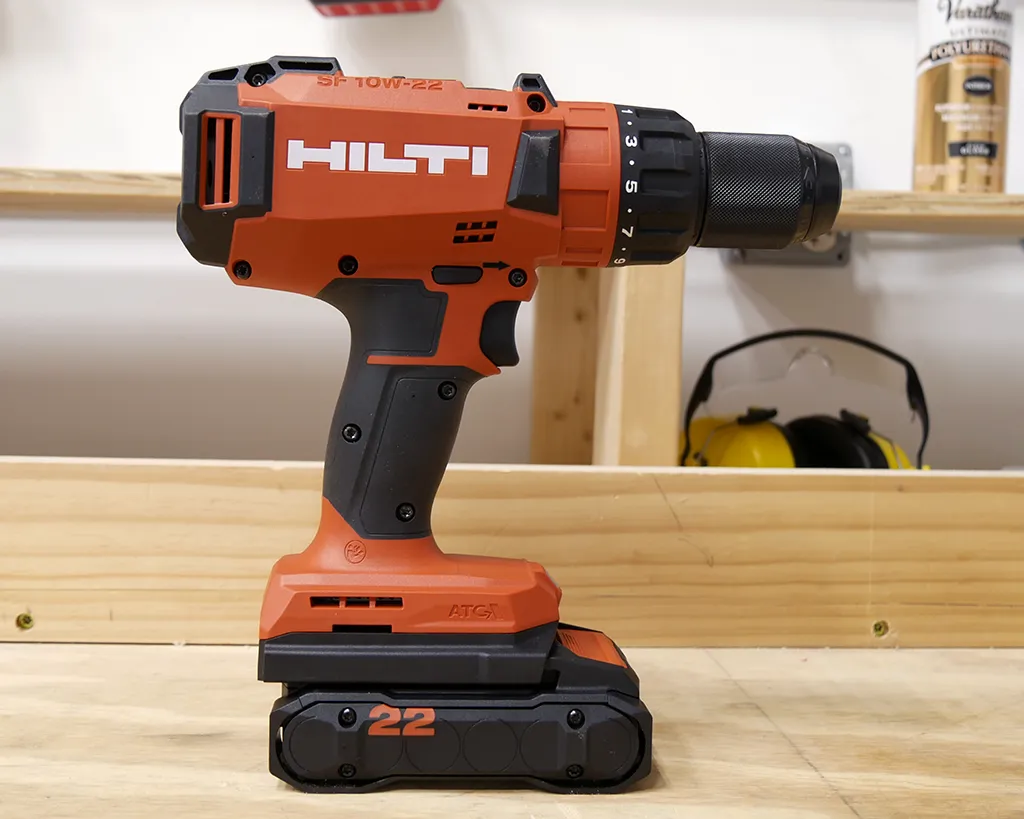What Is a Drill?
A drill is a handheld power device used for boring holes and driving screws. It’s one of the most-used items on any job site or in a homeowner’s garage. Whether you’re building a deck, hanging shelves, or assembling furniture, a drill handles most of the fastening and boring work with speed and control.
There are corded and cordless models, along with several subtypes like hammer drills and right-angle drills, depending on the task and space. Versatility, portability, and ease of use make this a must-have.
History of the Drill
The handheld electric drill was invented in 1917 by Black & Decker, setting the foundation for the modern cordless versions we use today. Over time, battery technology, speed control, and torque settings evolved. Brands like DeWALT, Milwaukee, and Makita expanded the lineup, giving us compact, brushless, and high-torque models that handle everything from cabinet installs to concrete drilling.
What It’s Used For
A drill is one of the most flexible devices in your lineup. Common uses include:
- Drilling holes in wood, metal, plastic, and drywall
- Driving and removing screws
- Installing hardware and fixtures
- Mixing paint or mortar (with the right attachment)
- Drilling into masonry and concrete (with a hammer drill)
Whether you're a homeowner or pro, it’s hard to get through a job without one.
What to Look for When Buying
There’s a huge range of drills out there, so here’s what matters when picking one:
- Corded or Cordless:
- Cordless offers mobility and convenience, ideal for most general jobs
- Corded provides nonstop power and is great for longer sessions or heavier drilling
- Chuck Size:
- Common sizes are 3/8 inch and 1/2 inch
- A 1/2 inch chuck accepts larger bits and is better for heavy-duty use
- Clutch Settings:
- Adjustable clutch lets you control torque to avoid overdriving screws
- More clutch settings give better control
- Speed and Power:
- Look for variable speed triggers and dual-speed settings
- Brushless motors offer better performance and battery life
- Battery Platform (for cordless):
- Choose a brand whose batteries you already use or plan to expand into
- 18V or 20V max systems are standard for most applications
- Size and Weight:
- Compact models are lighter and great for tight spaces
- Full-size models deliver more torque but may fatigue your arm faster
Pros and Cons
Pros
Cons
Accessory Compatibility
Drills accept a wide range of bits and attachments, including:
Use the right bit for the job, and your drill becomes even more capable.
Safety and Maintenance Tips
- Always wear eye protection
- Let the bit do the work, don’t force it
- Use the clutch to avoid stripping fasteners
- Check the chuck regularly to ensure the bit is tight
- Keep the battery charged and contacts clean
- Don’t drill into walls without knowing what’s behind them
Who This Is For
- Homeowners who want one device that handles most household tasks
- DIYers building, assembling, or fixing around the house
- Pros who need reliable performance for framing, finish, cabinetry, and install work
A drill is one of those things you’ll use more often than you think—it pays to get one that’s solid and comfortable.
FAQ
You can, but it’s not ideal. Use a hammer drill for proper performance in masonry.
Brushless motors are more efficient, produce less heat, and last longer, but they cost more.
For general use, 12V is fine. For more demanding work, 18V or 20V max gives better power and runtime.
Final Thoughts
A good drill is a no-brainer. From simple repairs to major builds, it’s a workhorse that earns its place fast. The key is knowing how you’ll use it, then picking the right combo of power, comfort, and features. Once you’ve got the right one in hand, you’ll wonder how you ever lived without it.

